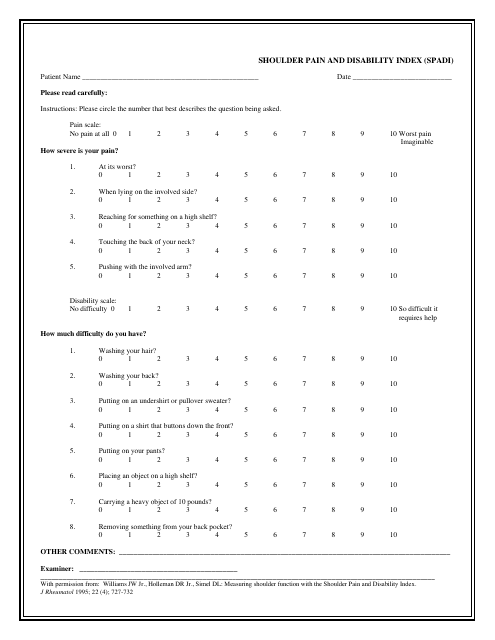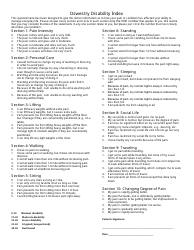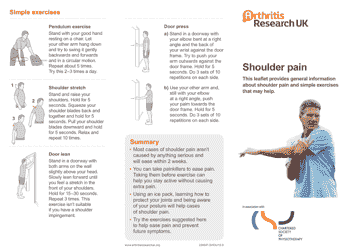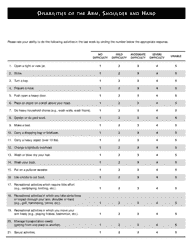Shoulder Pain and Disability Index (Spadi)
The Shoulder Pain and Disability Index (SPADI) is a tool designed to measure the impact of shoulder conditions on both pain levels and the ability to conduct activities of daily living. It consists of two dimensions: a 'pain scale' and a 'disability scale', each represented by several questions. The patient will answer these based on their personal experiences, thus aiding healthcare professionals in assessing the severity of the shoulder issue and tracking patient progress during the treatment process. It is widely used in clinical settings and research involving shoulder conditions.
The Shoulder Pain and Disability Index (SPADI) is typically filed by healthcare professionals such as physical therapists, orthopedic doctors, and rehabilitation specialists. It is a patient-reported outcome measure used to assess shoulder function, particularly in individuals suffering from various shoulder disorders. The SPADI questionnaire is filled out by patients themselves as it assesses their personal perception of shoulder pain and disability in performing daily activities. However, it is healthcare providers who are responsible for implementing the SPADI tool into their practice, recording the responses, and assessing the results.
FAQ
Q: What is the Shoulder Pain and Disability Index (Spadi)?
A: The Shoulder Pain and Disability index (Spadi) is a tool used to measure the impact of shoulder pain on both pain levels and functional activities in patients. It consists of two dimensions; pain and disability. It is a self-report questionnaire that provides a total score out of 100, which can be further subdivided into a pain score and a disability score.
Q: How is the Spadi score calculated?
A: The Spadi score is calculated with 5 pain and 8 disability related questions. Each question is scored from 0 (no pain/no difficulty) to 10 (worst imaginable pain/so difficult it required help). The final score is calculated as a total of the scores for each question, divided by the total possible score, then multiplied by 100 to get a percentage.
Q: Who uses the Shoulder Pain and Disability Index (Spadi)?
A: The Spadi is typically used by healthcare professionals, especially physiotherapists and orthopedic doctors, to assess the severity of a patient's shoulder pain and its impact on their daily activities and quality of life. It helps to monitor the effectiveness of treatment over time.
Q: What is the benefit of using the Shoulder Pain and Disability Index (Spadi)?
A: The main benefit of using the Spadi is that it provides a comprehensive overview of a patient's shoulder pain and its impact on their daily life. It also allows healthcare providers to track the progression of the condition and the effectiveness of various interventions. Furthermore, it is a convenient, easy-to-use tool that requires no specialized equipment.
Q: Are there any limitations to using the Shoulder Pain and Disability Index (Spadi)?
A: While the Spadi is a valuable tool for assessing shoulder pain, it does have a few limitations. It is a self-reported measure, so it relies on the patient's ability to accurately report their pain and disability. Additionally, it does not measure other aspects of health that may be impacted by shoulder pain, such as mental health or overall quality of life.
Q: Can I use the Shoulder Pain and Disability Index (Spadi) at home?
A: Yes, the Spadi can be used at home to monitor your shoulder pain and its impact on your daily activities. However, for a comprehensive assessment and proper treatment, it's recommended to consult with a healthcare professional.








